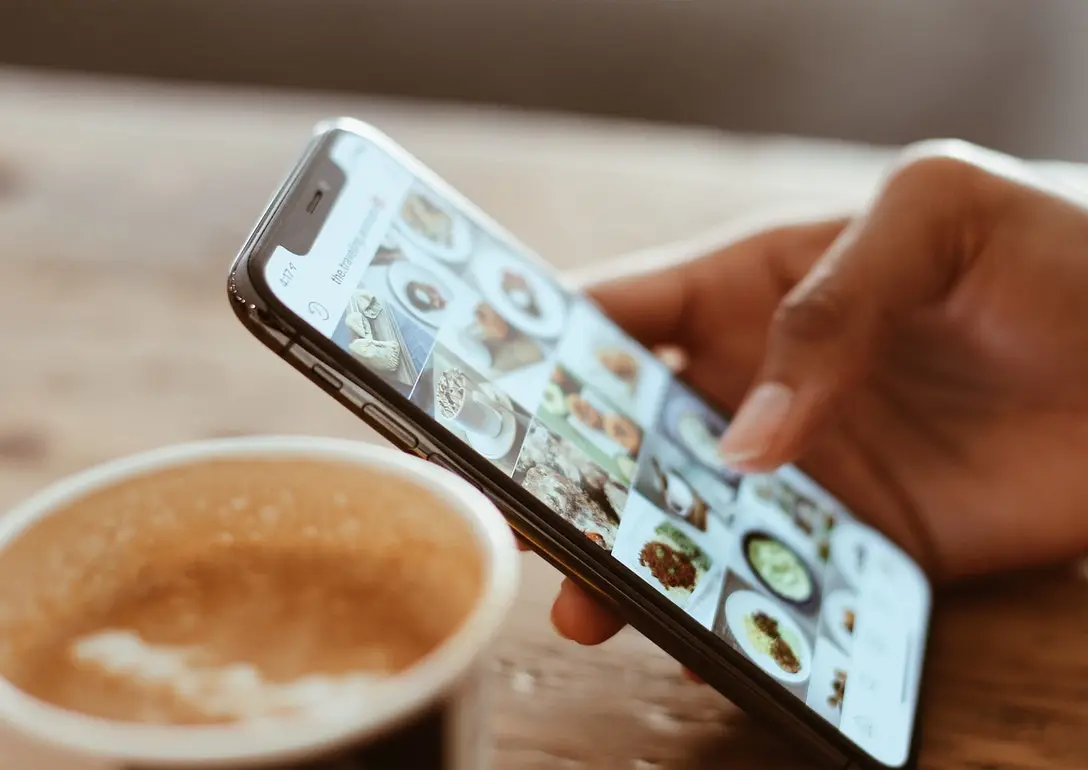Many people turn to food influencers for advice and recommendations on where to eat. According to research, 92% of consumers say they trust the recommendations of their friends, relatives, and influencers more than any other form of advertising. More than 70% of consumers are more likely to buy something based on a social media reference.
Social media food influencers may be YouTube creators, food bloggers, Instagrammers, Facebook users, or Twitter users. Instagram is especially relevant to the food industry due to its visual nature. Imagine Instagram food influencers and the colorful photos they post of tempting desserts and mouthwatering sandwiches. Millennials, in particular, love looking at food pictures on Instagram, which is significant when it comes to Instagram influencer marketing. According to a Morgan Stanley report, 53% of millennials go out to eat once a week.
Restaurant operators can benefit from reaching millennials and the general population through platforms like Instagram, YouTube, and Facebook. An influencer can help a restaurant reach its target audience quickly, effectively, and affordably.
If you would like to partner with an influencer to attract customers and drive sales, you might be wondering where to start. In this post, we’ll show you how to find Instagram influencers, food bloggers, and other food industry influencers so you can reach a wide audience in a digital world. We’ll also consider ways to choose the right influencer partnership for your business, and we’ll discuss how to measure the success of your partnership by focusing on engagement metrics.
What Is a Food Influencer?
An influencer is someone who has the power to impact the purchasing decisions of their audience. A food influencer is an individual who can generate excitement over foods or restaurants they recommend. Influencers, in general, have built a reputation and a relationship with their audience often through social media. An audience trusts the influencer’s opinions and recommendations because of their level of knowledge or authority. Some food influencers have the power to affect decisions simply because they have a strong positive relationship with their audience and regularly engage with their audience. Influencers make regular posts about their chosen topic, and typically have thousands of followers.
What Are the Different Types of Food Influencers and How Can They Help?
Food influencers may include celebrity chefs, industry experts, and social media content creators. Restaurant owners can benefit from partnering with social media influencers because there are many ways to reach the audience through online content. Many bloggers, YouTube creators, Instagram creators, and Facebook users have large followings and highly influential content. They only need to post a blog about your restaurant or an Instagram photo of one of your dishes to potentially reach thousands of people and encourage them to try your food.
Small businesses, in particular, can benefit from partnering with a micro-influencer. A micro-influencer is an everyday person who has gained a decent following for their knowledge in a particular niche. You can search for local micro-influencers to target the right audience.
Factors to Consider Before Your Restaurant Partners with a Food Influencer
Most marketers already use the power of influencer marketing. According to a Linqia report, 86% of marketers used influencer marketing in 2017. More than 90% of marketers found influencer marketing effective. Although influencer marketing may be exciting, you’ll want to consider certain factors first to make sure it’s the right fit for you and your restaurant. Here are important things to consider before you partner with a food influencer.
1. Your Budget for the Partnership
Before you contact an influencer, you need to figure out your budget and how you’ll provide compensation. The size of your budget will help you choose the right influencer.
Generally, the more followers an influencer has, the more it will cost you to work with them. For example, you can expect to pay $1,000 per 100,000 Instagram followers. Although this may seem like a lot, you’ll have room to negotiate, and you may be able to offer free meals as part of the compensation if the influencer is already a fan of your restaurant.
If you work with a micro-influencer, who will likely have less than 10,000 followers, you can expect to pay less. A 2016 Bloglovin’ survey found that micro-influencers tend to charge less than $250 per social media post. Blog content usually costs more, but no more than $500 per blog post, according to the survey.
You also need to decide if you want to budget for a giveaway or contest as part of your marketing campaign. For example, you can partner with a food influencer and ask followers to share a post for a chance to win a prize. Giveaways generate a lot of excitement and quickly increase brand awareness.
2. Which Platform to Use
Your marketing strategy needs to be specific to stick to your budget, so it’s recommended to focus on one social media channel to start. Decide which channel you wish to use before you reach out to influencers. YouTube or Instagram are reliable choices for the food industry.
If your dishes offer high aesthetic appeal, consider focusing on Instagram influencer marketing. The Linqia report found that over 90% of marketers consider Instagram the most important in their influencer marketing strategy. You can attract new customers when they see irresistible photos of your food posted by their favorite influencer.
If your restaurant sparkles with personality, consider partnering with a YouTube influencer. You might work with a YouTube influencer to create demonstration videos, for example, and show customers how your restaurant stands out from the rest.
You can also choose a social media channel by considering where you need the most growth. For example, if you would like to increase your number of Facebook followers, consider partnering with a Facebook influencer.
3. The Length of the Partnership
Working with a food influencer is about building a partnership in which each party benefits. You get to reach their followers, and the influencer gets content to keep their followers engaged. More extended partnerships can be beneficial because you’ll consistently attract new customers, and the influencer will have a steady flow of content. If your goal is to implement a lengthy campaign, consider your budget and how you can compensate the influencer fairly.
If your goal is to promote a one-time event and you only need a single post, be ready to explain your goals to the influencer, so they know what to expect.
4. If the Food Influencer Is Local
Unless your restaurant has locations all over the country, you’ll want to go with a local micro-influencer. A local micro-influencer will likely be more affordable than an influencer who has over a hundred thousand followers. A local influencer covers a certain region and focuses on a local audience.
Working with a local food influencer is critical in making sure you reach the right audience. You’ll also be able to build a lasting relationship with the influencer if they’re local. Just make sure to choose someone who has a strong following in your area.
How Your Restaurant Can Partner with Food Influencers
After you’ve determined your budget and what you hope to accomplish with a partnership, you’ll be ready to find the right influencer for the job. Here are tips for finding a local influencer and monitoring the results of a campaign.
1. Compile a List
First, search for local influencers and compile a list of about ten potential influencers. Ideally, you’ll want to find local influencers who already enjoy eating at your restaurant. To find influencers, take these steps:
- Search Instagram hashtags: Search for hashtags that may be relevant to your products or services. For example, you might enter your city name, followed by words like “eats” or “foodie.” See what pops up and examine the accounts you find. You can also use hashtags to find followers on Facebook. Make a list of users who have a lot of followers and a solid record of engaging with their audience.
- Search YouTube: Search for your city and restaurant type on YouTube and see what you find. For example, if you own a pizza restaurant in Chicago, you might search for “best pizza in Chicago,” or “my favorite pizza in Chicago.” Your search can lead you to local YouTube food influencers.
- Explore your follower accounts: Look at your own Instagram, YouTube, or blog follower accounts for potential influencers. If they already know and love your restaurant, they could be the perfect match.
- Check competitors: Look into competitors’ followers and who’s tagged them recently in posts. Your competitors can potentially lead to influencers who fit your niche.
- Search Google: A quick way to connect with food bloggers and potential influencers in your area is to search for local food bloggers with Google. Search for influencers who speak to the audience you wish to reach and who have a history of writing about the type of food you serve.
Once you have your list, reach out to potential influencers through email or their preferred contact method.
2. Ask the Right Questions
You’ll want to ask potential influencers the right questions to narrow your choices. Keep your budget and goals in mind, and be sure to ask the following questions.
What Are Your Fees?
Fees will vary between influencers, how many followers they have, and the type of content they create. You may be able to negotiate, but you’ll still need to make sure their fees align with your budget.
How Do You Relate to My Target Audience?
Influencers have the power to influence buying decisions because their followers trust them. To find an influencer your target audience will trust, you need to connect with someone who appears relatable and authentic to your audience.
For example, if you serve healthy, vegan food and want to target millennials, you probably want to avoid partnering with an influencer who targets steak lovers. The key is to know your customers and the type of influencer they would connect with online.
What Brand Partnerships Have You Had in the Past?
Ask the potential influencer who they’ve partnered with in the past and if they can provide examples. Look at their past partnerships and consider how their platform integrates brands, so you can gain an idea of what to expect.
What Type of Content Do You Produce?
Micro-influencers may use platforms like Instagram to share content, and they may also use blogs, YouTube channels, and websites. Some may have access to local magazines or TV shows. It’s essential to find out all the ways an influencer can help promote your brand so you can choose the best channel to reach your goals. For example, if a micro-influencer creates both blog and Instagram content, it doesn’t necessarily mean it’s best to pay them for both. Choose the platform where they have the most followers to run your campaign.
Are You Aware of My Products or Services?
A micro-influencer who is a fan of your products may have already produced content featuring your restaurant. If the micro-influencer has already created content covering your restaurant, it will seem more natural and authentic to their audience when they partner with you. Authenticity is especially important when targeting millennials because they are more likely to avoid brands that come off as gimmicky.
3. Check Their Track Record
Ask the influencer for examples of their work from the past year, including metrics. Compare their most successful partnership posts with their least successful and find out why the numbers were lower with certain posts. By looking at their numbers, you’ll gain insight into their engagement with their audience, and if they’re a good fit to help drive sales for your business. When you examine past posts, also look for authenticity and if their personality aligns with your values.
4. Establish an Agreement
Once you choose your influencer, you can both work together to establish an agreement. You’ll need to develop the following:
- The length of the partnership
- The type of content they will create
- The length of videos or blog posts, if applicable
- Critical points they should mention in the content
- Date and time of posting content
- How long the content will be displayed on their account
- Number of posts required
- Who will own the content created in the campaign
- How you will compensate them
An agreement helps ensure everyone is on the same page and reduces the risk of miscommunication.
5. Monitor the Influencer’s Online Activity

You can turn on post notifications so that you know when someone comments on the post. If you’re doing a giveaway or contest, you may get an overwhelming amount of comments. If you get too many comments, you can turn off notifications and check the post frequently instead to respond to questions or comments about your restaurant. If someone asks questions about the content itself, allow the influencer to respond to those questions. Keep track of follower growth on your account and check out the metrics to see how the audience is engaging with your content. Most social media platforms have metric trackers built-in. On Instagram, for instance, you can see engagement metrics under the Activity tab. Keep track of how many likes, comments, and shares the post receives on the influencer’s account and your account to determine if the content is resonating with the audience.
How to Measure the Results from Partnering with a Food Influencer
You can measure the return on investment (ROI) easily when you partner with a food influencer because you and your influencer can track data online. Ask the influencer to send you detailed analytics on the engagement level of their posts.
If you work with an Instagram influencer, ask them to add a link that allows followers to order your food online. From there, you can track customers’ orders and determine your ROI. You can also offer a discount code and track the number of orders that were placed with that unique code to see if there was a rise in sales and figure out your ROI.
If the influencer is posting your restaurant website on their account, make sure you include a tracking link. A tracking link lets you know how people got to your website so that you can assess the public’s interest in and response to the campaign.
Check your online traffic for overall engagement increases, and also observe your restaurant. Ask yourself the following questions to determine the effectiveness of the campaign:
- Are people commenting about your restaurant?
- Are you getting new followers?
- Is your website seeing an increase in visitors?
- Are new customers coming into your restaurant?
Once you see the impact of the partnership, you can determine if you want to work with the influencer again in the future. You can also see how the campaign played out and find new ways to reach your target audience as effectively as possible.
Recap
As a restaurant owner, you need to engage with your audience in the digital world as well as the dining room. Social media platforms like Facebook, Instagram, and Twitter have forever changed the dining experience. Today’s customers share their restaurant experience with hundreds of other potential customers by posting photos, videos, reviews, and stories online. Restaurant owners are under a ton of pressure to make a great impression on everyone who walks through the door.
Despite the higher level of accountability, restaurant owners can use social media to attract new customers and improve their relationships with current customers in a variety of ways.


-3.png)
-1.jpg)





